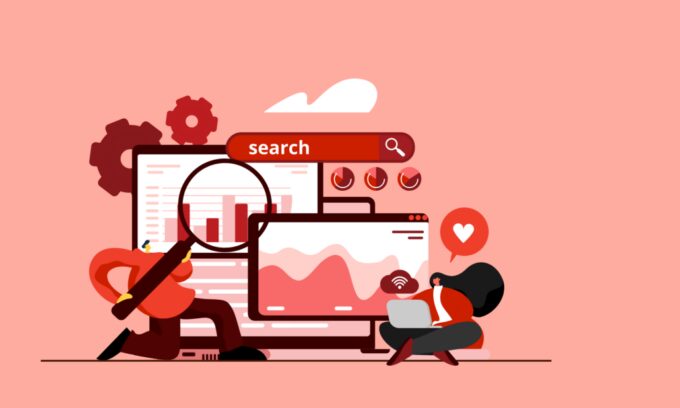In terms of brand reach, today’s crowded marketplace has made this asset move from nice to have toward lifeblood of business. Why? Because it impacts everything from website traffic and social media engagement to sales and customer loyalty.
With a thorough understanding and proper implementation of effective strategies, amplifying your brand’s voice, attracting more customers, and ultimately achieving lasting success won’t be difficult. This guide will walk you through seven proven tips, each with actionable steps and real-world examples, to help you expand your brand’s reach and make a bigger impact.
Search Engine Marketing (SEM)

Source: abstraktmg.com
Search engine marketing (SEM) is a powerful tool to quickly amplify your brand’s visibility in the digital world. With most people never scrolling past the first page of search results, it helps ensure your brand appears front and center when potential customers are searching for solutions you offer. This is particularly beneficial for new brands or those looking for a rapid boost in traffic.
The most well-known form of SEM is pay-per-click (PPC) advertising. Platforms like Google Ads and Bing Ads allow you to bid on keywords relevant to your business. When someone uses those keywords in their online search, your ad has the potential to appear as one of the top results. But as paid search marketing demands proper budgeting and keyword bidding, work with SEM marketing specialists, such as News Xtend, who can help maximize your ROI.
However, SEM isn’t just about paid ads. It also includes optimizing your website and content for organic search (SEO). By combining paid and organic search strategies, you can create a comprehensive approach that maximizes your brand’s visibility in search engines.
Social Media Marketing

Source: forbes.com
Social media platforms are powerful tools for brand building, customer engagement, and driving traffic. With over 5.07 billion active social media users worldwide, it’s crucial to choose the right platforms for your audience. For instance, a B2B software company might focus on LinkedIn, while a fashion brand might prioritize Instagram.
Next, create compelling content that showcases your brand’s personality and resonates with your target audience. Share behind-the-scenes glimpses, run contests, or post user-generated content to spark conversations and foster a sense of community. For instance, a travel company could run a photo contest encouraging followers to share their vacation pictures using a branded hashtag.
Targeted ads can further amplify your reach, allowing you to precisely reach specific demographics or interests. And with the ability to track results, you can optimize your ad campaigns for maximum impact. For example, a local bakery could target ads to people within a certain radius of their shop who have shown an interest in baked goods.
Content Marketing
Content marketing is about creating valuable content that attracts and retains customers. Blog posts, videos, podcasts, infographics – the possibilities are endless. By providing helpful information or entertaining stories, you can establish your brand as a trusted authority in your field. A software company might create a series of tutorials on how to use their product, while a fashion brand could share style guides and trend reports.
Tailor your content to your target audience’s interests and needs. Conduct keyword research to identify popular topics and questions. For instance, a financial advisor could write a blog post titled “5 Steps to Start Investing in Your 20s” if their target audience is young adults.
Remember, content isn’t effective if no one sees it. Promote your content across your social media channels, email newsletters, and even paid advertising channels. Additionally, be consistent and authentic when creating content. Don’t just create one article and go missing for months. Keeping your target audience engaged with original content cements your position as a niche leader.
Influencer Marketing

Influencers are like the modern-day word-of-mouth marketers. By partnering with individuals who’ve built a loyal following, you can instantly expose your brand to a wider audience. Many top brands are expected to increase their influencer marketing budget to USD$ 7.14 billion in 2025. This is because many internet users trust recommendations from influencers, making it a major part of SEM.
Choose influencers who align with your brand values and whose audience matches your target demographic. For instance, a sustainable clothing brand might partner with an eco-conscious fashion blogger.
When working with influencers, focus on creating authentic campaigns that seamlessly integrate your brand into their content. Sponsored posts, product reviews, or giveaways are just a few examples. A fitness brand could collaborate with a yoga instructor to create a series of branded workout videos.
Public Relations (PR)
PR is all about managing your brand’s image and reputation. Positive media coverage in reputable publications can establish your brand as a leader in your industry. Most consumers first research about reviews, reputations, and major mentions about a brand before engaging it. If the business image is good, then they’re likely to use their services or products.
Crafting compelling press releases, building relationships with journalists, and participating in industry events are all part of a successful PR strategy. Remember, PR is about more than just getting your name in the news. It’s about building credibility and trust with your audience. A food brand could partner with a charity to support a cause they believe in, generating positive PR and demonstrating their commitment to social responsibility.
Email Marketing

Source: searchenginejournal.com
Email marketing is still one of the most effective ways to connect with your audience. There are four billion email users worldwide and this number is perfect for targeting your idle client. What’s more, it offers opportunities for personalization where you can tailor email messages to each prospect.
Build your email list by offering valuable incentives like exclusive content, discounts, or free resources. Next, create targeted email campaigns that speak directly to your subscribers’ interests. It’s important to note that segmented emails generate 30% more opens and 50% more click throughs than unsegmented ones. Therefore, make them as targeted as possible.
Don’t forget about email automation. Automated email sequences can welcome new subscribers, nurture leads through the sales funnel, and even re-engage inactive customers. An e-commerce brand could send an automated email to customers who abandoned their shopping carts, offering a discount to incentivize them to complete their purchase.
Conclusion
Building a strong brand doesn’t happen overnight; it requires time and dedication. One has to be very attentive and keep adapting constantly to different strategies. You shouldn’t be afraid of trying out something new. This way, you’ll be agile and responsive to the needs of your audience to build a resonating brand.



